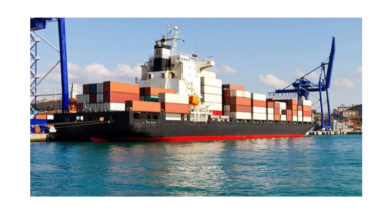The Future Of 3D Printing
According to the Smithers Pira report The Future of 3D Printing to 2025, the global 3D printing market was estimated to be valued at about $4 billion in 2014.
The market is expected to reach $5.9 billion in 2015 and is forecast to grow to $49.1 billion by 2025, representing an average annual growth of 23.7% for the 10-year period. The 3D printing market comprises the combined value of 3D printers, raw materials, manufactured parts and services.
During the next 10 years, 3D printing is well positioned to begin to revolutionise manufacturing processes and methodologies worldwide. The word ‘revolutionise’ is used because until now most plastic and metal parts relied on older, and in some cases ancient, moulding technologies for shaping parts and products into the required design.
3D printing, however, promises to create such parts and products by simply printing the shape in a standalone process. Furthermore, 3D printing has the capability of not only printing very complex parts, but also printing completely integrated part combinations as a single finished product, and in many cases being able to print more complex designed parts than could ever be done by traditional moulding processes.
Four key factors will define the future growth of 3D printing, namely:
– Improving printer capabilities
– Broadening applications
– New print tools
– Raw materials advances.
These key trends, identified and studied in-depth in the Smithers Pira report The Future of 3D Printing to 2025, are briefly outlined in the article.
Improving printer capabilities
All 3D printing technology is based on a relatively simple principle that if enough 2D cross-sectional layers can be ‘built’ on top of each other in the proper design sequence, then a 3D shape and model can be created. Therefore, a 3D model or design is simply the successive layering of 2D cross-sectional patterns of the intended 3D design. Technologies differ in the way the 2D layers are created and what types of materials constitute the layers.
Expected improvements will come from a variety of important performance changes, including:
– New designs for CAD programs and improved STL file interface, or replacement of standard STL files by new 3D programming instruction codes
– More accurate and precise digital control of 3D equipment
– Faster printing speed (use of multiple printing heads) and material application designs
– New materials and chemistry to meet improved printing speed, enabling multimaterials
– Improvements to allow greater use of metal and ceramics.
Such improvements will help to drive 3D printing out of the realms of traditional rapid prototyping and into direct manufacturing of commercial parts and products on an economic scale never seen in the history of 3D printing.
Broadening applications
The first applications for 3D printing were relegated to primarily rapid prototyping, to accelerate early-stage product development by producing multiple experimental iterations to identify a best design solution. This work has paved the way for more accurate production mould design and tooling, as well as new future growth approaches towards the final design of the product. Prototyping continues to be one of the largest uses for 3D printing today.
As the use of 3D printing and prototyping becomes more sophisticated, new 3D processes and new materials have been developed to improve overall 3D printing capabilities. These improvements open up many more industrial sectors to 3D printing.
Examples will include:
– Multifunctional part consolidation into a single part
– Lightweighting strategies for automotive and aerospace
– Increasing need for products with variable wall thickness
– Paradigm shift in the supply chain, such as “just-in-time” inventory strategies, or production of new and replacement parts in remote locations.
New print tools
As a general rule, 3D printer technology has not yet been able to succeed in matching part cost economics compared to traditional moulding technologies; however, future technology is anticipated to enable improved manufacturing economics by 2025 so that 3D printing can compete at higher scale part counts when compared to today.
Improved manufacturing economics will come from improved printer performance and improved raw materials. The drivers for such improvement will emanate from the previously described technology and market trends, which taken in combination are the key influencers for printer machinery trends.
Raw materials for 3D printing span a very large number of types, properties, performance and cost. The selection of a particular raw material depends less on the name of that raw material and more about the performance properties that have been formulated into that raw material. For instance, in the world of moulded plastics and metals, there are countless examples of raw material substitution such as the use of glass-filled nylon to replace metal in certain automotive applications or the use of polycarbonate resin to replace window glass.
Raw materials are rapidly evolving as both printing and end-user technology also evolve over the long term. In fact it is the innovation of certain raw material formulations that has allowed the invention of new printing technologies, including advances for inkjet printing. It is expected that during the next 10 years formulations will continue to improve which will allow a further fine tuning of how material chemistry will enable manufacturing processes to better meet the needs of part design and geometry.
Raw material innovation will most likely emanate from the following areas of research:
– Understanding how to better tailor the rheology and viscosity of the raw material
– Understanding how to create new building block monomers for photopolymers
– Understanding the relationship and interaction at the molecular level of different materials at both the surface and interfacial levels
– Understanding the physical properties induced by the multilayer building process.





